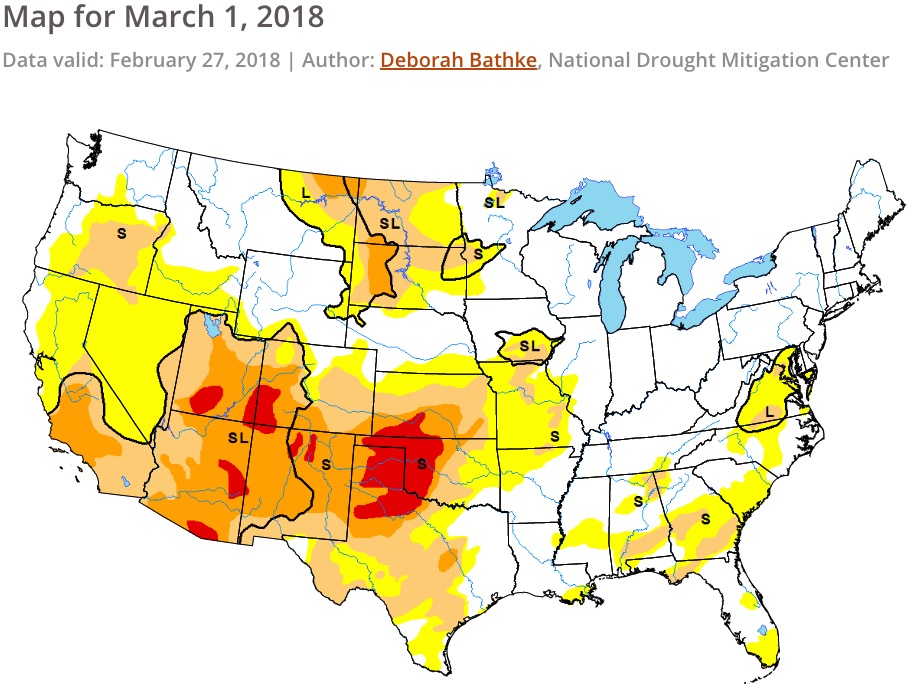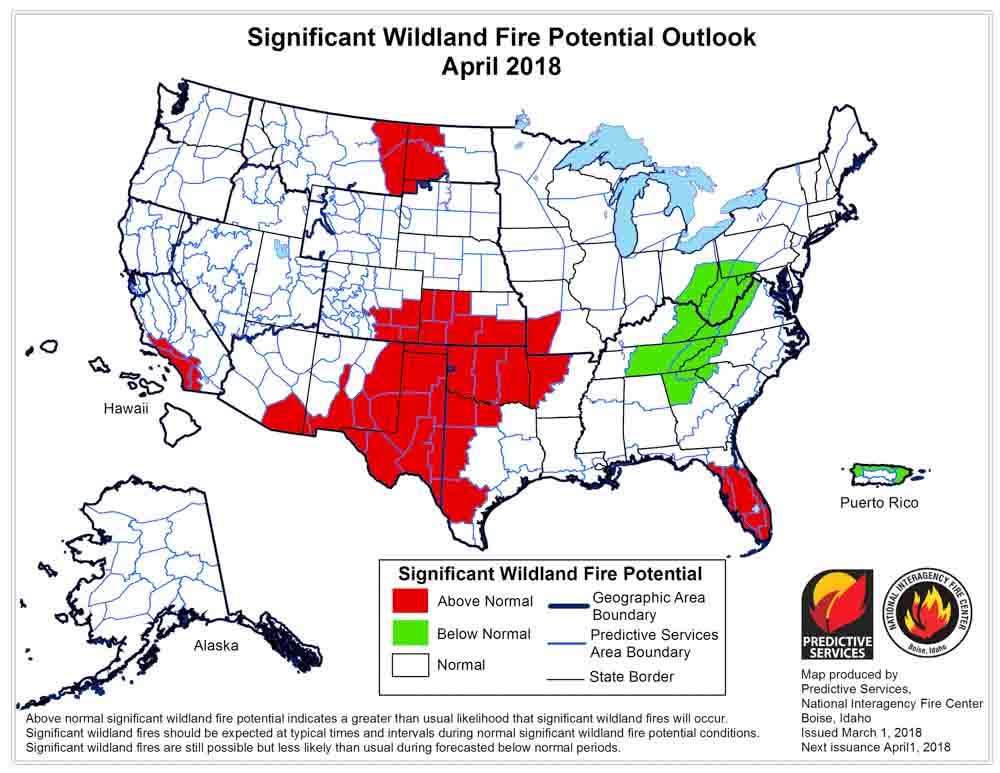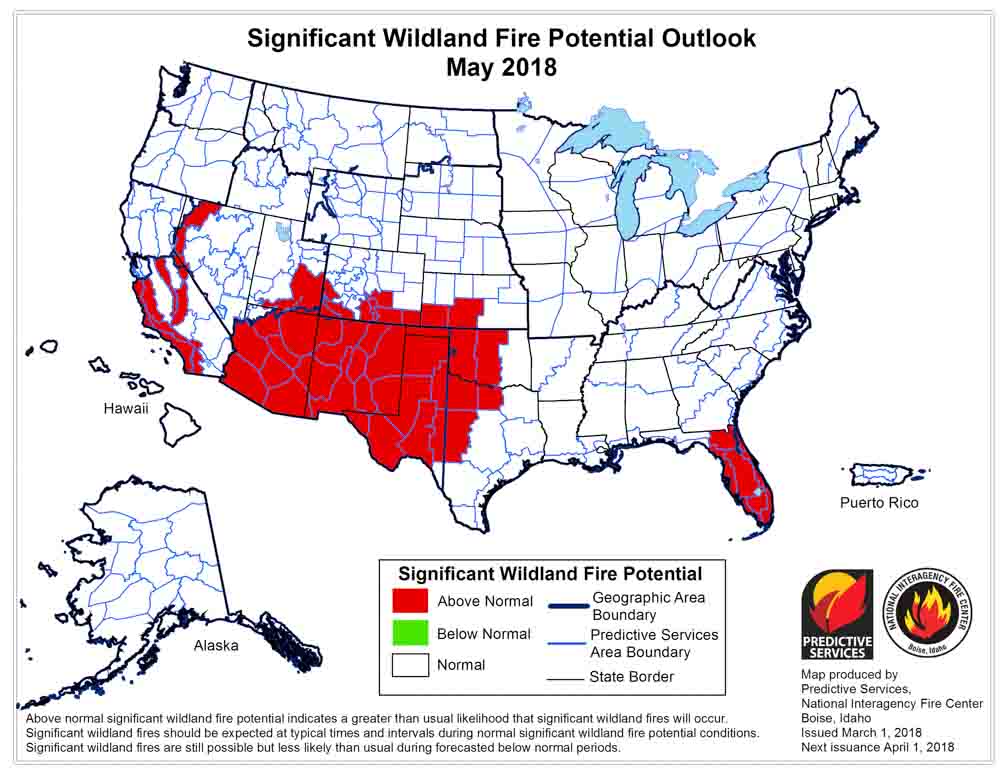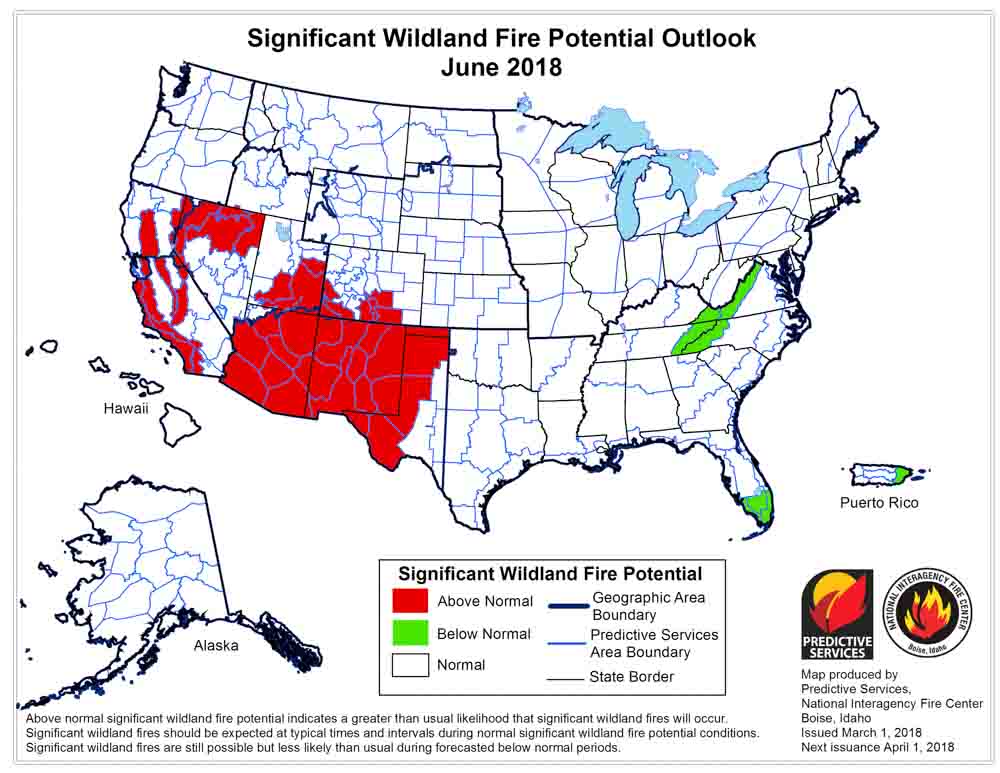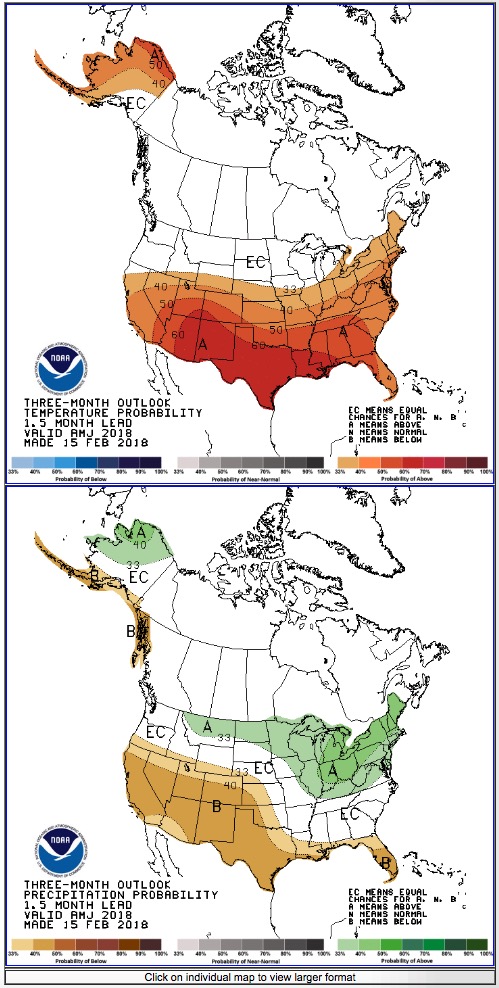Above: wildfire potential for March, 2018, issued March 1, 2018.
(Originally published at 5:10 p.m. MT March 1, 2018)
On March 1 the Predictive Services section at the National Interagency Fire Center issued their Wildland Fire Potential Outlook for March through June. The data represents the cumulative forecasts of the ten Geographic Area Predictive Services Units and the National Predictive Services Unit.
If the prediction is accurate, the wildfire potential in Southern California, the Southern Plains, and portions of the Southwest will remain above normal for the entire four-month period.
Below are:
- The highlights of the NIFC narrative report for the next several months;
- NIFC’s monthly graphical outlooks;
- NOAA’s three-month temperature and precipitation forecasts; and
- Drought Monitor.
“Wildfire activity is likely to increase in March in a manner typical to most years beginning in the central through southern Great Plains and the Southwest where preexisting drought conditions and fuel loadings have promoted an environment favorable for Above Normal significant wildland fire potential entering spring. While some improvement is expected across East Texas and Arkansas, areas to the west will likely see a continuance or an intensification of the Severe Drought conditions. Periods of special concern will be highlighted by passing weather systems that create periodic strong, westerly, downsloping winds. During such events, ignitions will be able to quickly become significant fires. Elevated large fire potential is also expected to continue across coastal portions of Southern California where preexisting dry conditions have left fuels in a very dry state.
“As the Western Fire Season continues to increase in activity across the Southwest in April, conditions across the central and southern Great Plains will gradually improve as greenup takes hold. Concerns across Southern California will remain as dry conditions will have led to a muted green up across the southern half of the state. Conditions in Alaska entering spring suggest a normal seasonal transition. While some areas of abnormally dry conditions exist across portions of the southwestern interior, large fire potential is expected to remain near normal entering May.
“The fire season activity across the Southwest will peak in May and June. Above Normal significant large fire potential is expected across the southern tier of the region during this period as drought conditions intensify under the dry, building heat. The same conditions will continue to promote Above Normal potential as well across Southern California. There is some indication that the Southwestern Monsoon may produce some initial surges in activity in late June. This could begin to slow activity across both regions while initiating the seasonal shift northward into the Great Basin. In Alaska, above average temperatures and near average precipitation across the state’s interior is expected to lead to Normal significant large fire potential for the core fire season months of May and June.”
